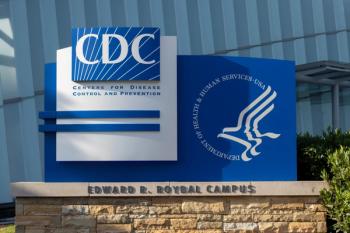
Endocarditis Hospitalizations Drop Among Medicare Beneficiaries
The hospitalization rate for the most serious cardiovascular infection declined despite a recommendation from the American Heart Association to limit use of preventive antibiotics.
The hospitalization rate for the most serious cardiovascular infection declined despite a recommendation from the American Heart Association to limit use of preventive antibiotics.
Hospitalizations for endocarditis have decreased among elderly patients in recent years, despite a recommendation to limit antibiotic use geared toward preventing such infections, according to the results of a new study.
In 2007, the American Heart Association revised its recommendations for antibiotic use to prevent endocarditis, the most serious cardiac infection. The new recommendations suggest that preventive antibiotics should only be taken by a subgroup of high-risk patients undergoing dental procedures.
The
A total of 262,658 beneficiaries were hospitalized with endocarditis throughout the study period. In 1999, the adjusted annual hospitalization rate for endocarditis was 72.0 per 100,000 person-years. This rate increased to 83.5 hospitalizations per 100,000 person-years in 2005. However, the rate decreased steadily beginning in 2006, reaching 70.6 hospitalizations per 100,000 person-years in 2010. Mortality rates ranged from 14.2% to 16.5% after 30 days and from 32.6% to 36.2% after 1 year. The results did not indicate an increase in hospitalization or mortality rates for endocarditis after the 2007 recommendation to limit preventive antibiotic use.
Hospitalization rates consistently declined among all demographic subgroups. However, black patients and those aged 85 and older generally had higher rates of hospitalization and mortality compared with those in other race and age groups, respectively. The average hospital stay for endocarditis patients also declined during the decade from 9.6 days in 1999 to 8.4 days in 2010.
These findings are consistent with 3 other studies evaluating endocarditis trends after the revised 2007 antibiotic recommendations were released. The authors suggest that the decline in endocarditis hospitalizations may be due to strategies that have been used to reduce rates of catheter-associated bloodstream infections, but more research is needed to confirm what caused the decline.
Although endocarditis hospitalization rates have decreased, the study results underscore the high burden of endocarditis among older adults, as the rates for 30-day and 1-year mortality remained high throughout the decade.
Newsletter
Stay informed on drug updates, treatment guidelines, and pharmacy practice trends—subscribe to Pharmacy Times for weekly clinical insights.




















































































































































































































